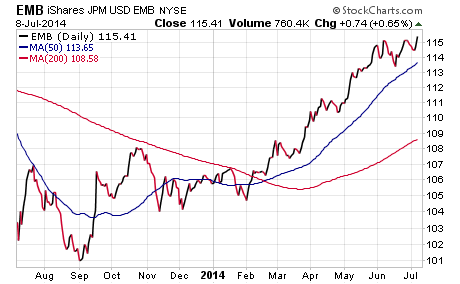Dynamic CEF Income Portfolio FMD Capital Management
Post on: 8 Апрель, 2015 No Comment

“Closed-end fund (CEF) investing is still a corner of the market where a manager has the opportunity to add alpha over an index, by way of their efforts in research and analysis.” – Michael Fabian, Managing Partner
FMD Capital Management has designed its Dynamic CEF Income Portfolio to take advantage of the inefficiencies that commonly occur in the CEF marketplace. It’s been proven that meaningful alpha can be generated by more than just purchasing an undervalued fund, but also through superior ongoing management and investment philosophy. Investors should remember that CEFs should not be viewed as a single asset class, but as a vehicle with specific set of goals and objectives.
Premium/Discount Analysis
The backbone of our CEF strategy is monitoring a funds price vs. its net asset value (NAV). CEFs can trade at discounts or premiums for their entire life depending on a multitude of factors including management team, strategy, leverage ratio, asset class, corporate actions, expenses, yield, size, retail or institutional investor interest. So when formulating our overarching investment thesis, we weight the factors to decipher the attractiveness of a particular fund’s market price in relation to its NAV.
FMD Capital’s selection profile includes funds managed by well-respected teams trading near their NAVs, or at modest discounts and that offer an alpha seeking strategy that cant reasonably be recreated using low-cost ETFs. We seek to increase exposure to funds that are trading below their trailing twelve-month average premium or discount, and reduce exposure to funds trading above their trailing twelve-month average premium or discount. We can use this inherent feature of CEFs to our advantage, by not selling during times of distress or buying during times of euphoria – since both can occur quite often in response to interest rate or equity market volatility.
We also favor funds that have a positive UNII and NII, otherwise known as undistributed net investment income and net-investment income. This means their portfolio generates more cash flow than what the board has elected to distribute to shareholders. Another critical consideration is a funds use of leverage, since the leverage ratio will both amplify positive and negative returns. We lean towards funds that employ a responsible amount of leverage that is borrowed at attractive rates, making for a more meaningful spread from the cost of borrowing and potential return of the CEFs portfolio. The factors that dont weigh particularly high in our decision making process are a funds size, or yield, as our fundamental research indicates these factors don’t contribute significantly to a funds chances for strong NAV performance and total return over the long-term.
Watch List
To pass the ultimate test for a CEF to be admitted into our portfolio, we typically monitor every prospective fund for at least 90-180 days. This is particularly important for newly issued CEF IPOs, since limited trading history can lead to erratic market price movement if market volatility rises. This time also gives us the ability to wait for semi-annual or annual reports to be made available, which allows us to glean portfolio composition and earnings to decipher exactly what the managers prevailing strategy is in relation to the board’s distribution rate. Watching a CEF’s price movement over time is of vital importance to establish a baseline for trading activity and portfolio turnover.

Trading
Entering and exiting CEFs can be tricky, mainly because of liquidity constraints. At FMD Capital Management, we monitor the average daily volume of every fund within our portfolio; that way we know the reasonable number of shares we can move in a single day. If we decide to begin building a position in a particular CEF, we set a target on how large the position should ultimately be, then break it into several purchases; that way you are spreading our trading risk over time. Reductions to existing positions are typically handled in the same fashion to mitigate liquidity risks.
Through our relationship with TD Ameritrade Institutional, we have several algorithm based trading programs at our disposal. This allows us to make purchases throughout the day based on factors such as volume or time, and not rely exclusively on limit orders to enter or exit positions. We are very mindful of expanding or reducing holdings without affecting the market price on a single day. In addition, when we do make a change to the portfolio as a whole, all of our CEF clients get the average price for the entire trade execution.
The right mix of income-generating CEFs and the expertise to navigate through any market condition are the two critical components of the Dynamic CEF Income Portfolio.
To learn more about our Dynamic CEF Income Portfolio strategy and fees simply Contact Us today or download our special report: The Leveraged Income and Alpha Strategy . Our minimums for this portfolio start at just $100,000.














